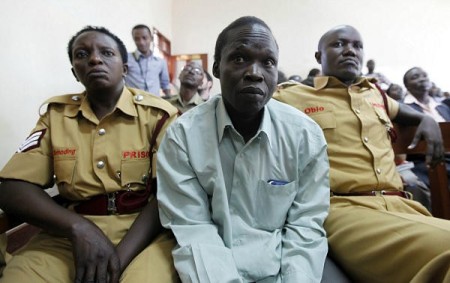(This post has been modified from a previous article published by the International Peace Institute’s Global Observatory)
As international forces scrambled to provide security for the visit of Pope Francis to the Central African Republic (CAR) and recent, largely-peaceful elections, local and international actors have called for the rearmament of the country’s armed forces following the re-emergence of sectarian violence. However, such a move is fraught with danger, including threats by certain ex-Séléka factions to invade the capital Bangui should it occur.

CAR’s national armed forces (FACA) in Bangui, photo credit: AFP
CAR’s recent wave of sectarian violence followed a civil war that erupted in December 2012, when the Muslim-led Séléka alliance headed by Michel Djotodia took up arms and toppled President Francois Bozize’s regime with help from Chadian and Sudanese mercenaries. Ensuing clashes between Séléka fighters and the mainly-Christian “anti-balaka” militias were estimated to have killed over 3,000 people before a ceasefire was signed in July 2014.
Following many months of relative calm, Bangui witnessed a renewal of intense fighting in late September this year. The apparent trigger was the stabbing death of a Muslim taxi driver, with residents of the capital’s PK5 neighborhood taking to the streets. Since then, at least 90 people have been killed and 40,000 displaced, according to United Nations estimates.Cameroonian and Burundian peacekeepers with the UN’s mission in CAR (MINUSCA) were among the dead. National political leaders have also been abducted and the myriad, well-armed militia groups continue to threaten the country’s transition after years of civil conflict.






